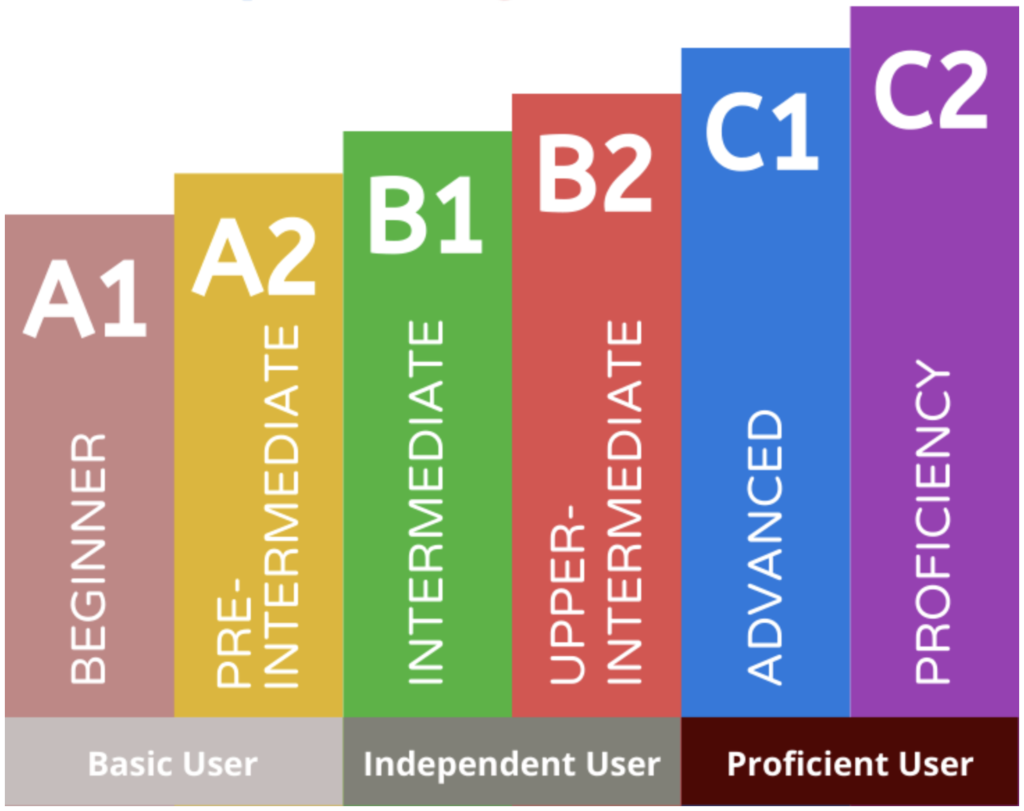Have you heard about CEFR? CEFR is short for ‘Common European Framework of Reference for Languages.’ It’s a system used all around the world to help learners understand their language level – and it’s not only used for English! In this blog post, I want to explain what the different levels are and why you should know your CEFR level.
The CEFR Levels
CEFR has six levels, from A1 (lowest) to C2 (highest). First, let’s think about what the letters A, B, and C mean:
- A1 and A2 – These are called basic user levels.
- B1 and B2 – These are independent user levels.
- C1 and C2 – These are advanced user levels or proficient levels.
At each level, we can describe what a language learner can do:
A1 (Beginner): Learners can understand and use simple words and phrases. They can say who they are and ask simple questions, like where someone lives or who they know.
A2 (Pre-intermediate): At this level, learners can understand more words and sentences. They can talk about their family, shopping, where they live, and jobs. They can talk with others about things they often do.
B1 (Intermediate): Now, learners can understand and talk about many things, like school, work, or traveling. They can use English in many situations.
B2 (Upper intermediate): Learners can understand a lot of English and talk easily with others. They can understand and talk about difficult things, too.
C1 (Advanced): At this level, learners are very good at English. They can understand and talk about almost anything. They can use English at work, in school, and in other difficult situations.
C2 (Proficiency): Now, learners can understand, talk, read, and write in English almost like a native speaker. They can understand and use English in any situation.
Why is CEFR helpful for learning English?
There are many reasons why you should understand your CEFR level but here are just a few:
- CEFR helps you understand how good you are in English. No matter if you’re learning in school, on a computer, or alone, CEFR is the same. You can see what you’ve learned and what you need to learn more.
- CEFR has clear levels, like steps on a staircase. Each level you reach is one more step up. It helps you see how much you’ve learned and what you can learn next.
- CEFR is a system that everyone understands. If you want to get a job or study abroad, people might ask about your CEFR level. You can tell them and they’ll understand your English level.
In short, CEFR is a useful system to track your learning progress while learning English. It helps you know your skills, speak to others about your skills, and see how far you have come on your learning journey!
